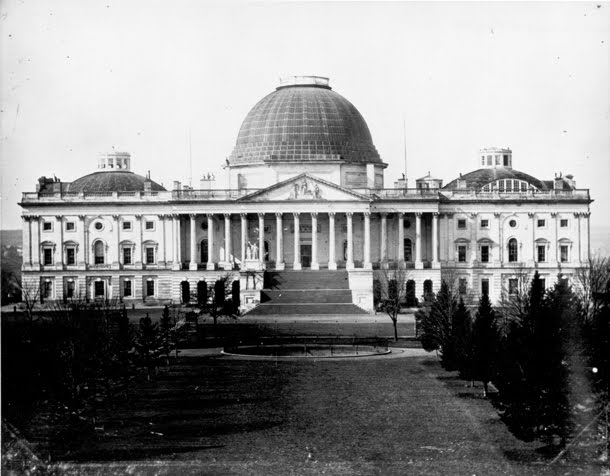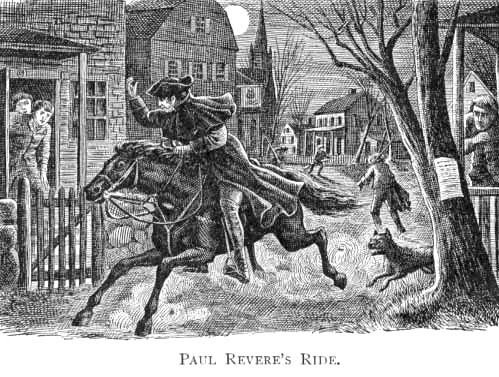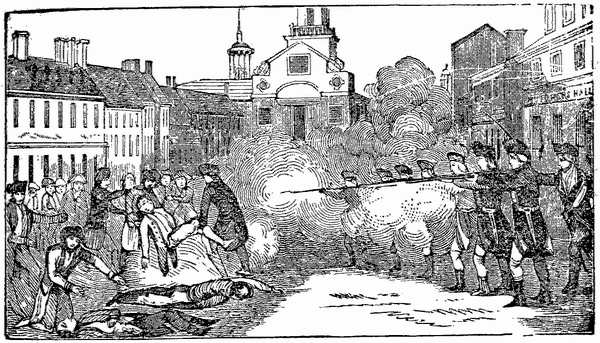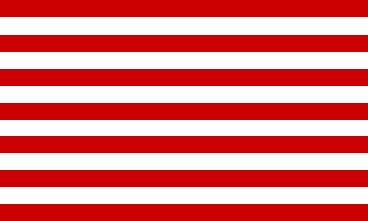From ADF and The Bangor Daily News:
How campus codes threaten free speech
By Greg Lukianoff, Foundation for Individual Rights in Education
Posted Jan. 08, 2012, at 6:51 p.m.
Activists embarked on a campaign in the 1980s to eradicate hurtful, bigoted and politically incorrect speech by enacting speech codes at universities across the country. Although the movement presented itself as a forward-thinking way to make campuses welcoming, the initiative stood in stark contrast to the celebrated “free speech movement” of the 1960s, whose proponents understood that vague exceptions to free speech were inevitably used by those in power to punish opinions they dislike or disagree with. And unfortunately the effort gained momentum as prestigious institutions passed speech codes.
The legal fig leaf upon which the speech-codes movement relied was the concept of “hostile work environment” harassment. Because civil rights laws, chief among them Title IX, banned sexual discrimination on campuses, harassment jurisprudence — sometimes combined with other tenuous rationales — became the primary legal tool universities used to formulate speech codes.
Courts, however, understood that merely naming a restriction a “harassment” code did not inoculate it from First Amendment scrutiny. In nearly a dozen courtroom losses between 1989 and 2010, harassment-based speech codes have been defeated at campuses from the University of Michigan to Stanford. Amazingly, these defeats have not slowed the spread of these codes. The Foundation for Individual Rights in Education, of which I am president, conducts an extensive annual study of campus speech codes; our 2012 report found that 65 percent of nearly 400 top colleges maintain codes that prohibit substantial amounts of clearly protected speech.
Overly broad harassment codes remain the weapon of choice on campus to punish speech that administrators dislike. In a decade fighting campus censorship, I have seen harassment defined as expressions as mild as “inappropriately directed laughter” and used to police students for references to a student government candidate as a “jerk and a fool” (at the University of Central Florida in 2006) and a factually verifiable if unflattering piece on Islamic extremism in a conservative student magazine (at Tufts University in 2007). Other examples abound. Worryingly, such broad codes and heavy-handed enforcement are teaching a generation of students that it may be safer to keep their mouths shut when important or controversial issues arise. Such illiberal lessons on how to live in a free society are poison to freewheeling debate and thought experimentation and, therefore, to the innovative thinking that both higher education and our democracy need.
The Education Department’s Office for Civil Rights, which enforces Title IX on college campuses, tried in 2003 to put a stop to the “government made me do it” excuse for speech codes. It issued a letter to every college receiving federal funds — so, virtually all — making clear that harassment requires a serious pattern of discriminatory behavior, not just mere offense. Since then, the number of campus speech codes has slowly begun to decline.
But last year the OCR backpedaled. The agency issued a 19-page letter in April dictating to colleges the procedures they must follow in sexual harassment and assault cases. Among its many troubling points, including a requirement that sexual harassment cases be adjudicated using the lowest possible standard of evidence allowable in court, is the fact that the letter makes no mention of the First Amendment or free speech. This ignores the role that vague and broad definitions of harassment have played in justifying campus speech codes and censorship over the past few decades. By mandating so many procedural steps colleges must take to respond to allegations of sexual harassment while simultaneously failing to mandate a consistent, limited and constitutional definition of harassment, the OCR encourages those on campus who are already inclined to use such codes to punish speech they simply dislike.
Rather than proffer shifting rules, the OCR should end the threat of harassment-based campus speech codes once and for all. The Supreme Court offered its only guidance on the thorny issue of student-on-student harassment in the 1999 case Davis vs. Monroe County Board of Education. The justices recognized the necessity of carefully defining what constitutes “harassment” in the educational context, lest everyday interactions be rendered a federal offense. The court defined harassment as discriminatory conduct, directed at an individual, that is “so severe, pervasive, and objectively offensive” that “victim-students are effectively denied equal access to an institution’s resources and opportunities.”
This definition, if applied fairly, poses little threat to free speech and effectively prohibits real harassment.
This week, FIRE and a broad coalition of organizations (the Tully Center for Free Speech at Syracuse University, National Coalition Against Censorship, the Heartland Institute, National Association of Scholars, Alliance Defense Fund Center for Academic Freedom, Feminists for Free Expression, Woodhull Sexual Freedom Alliance, American Booksellers Foundation for Free Expression, Accuracy in Academia, and the American Council of Trustees and Alumni) are writing to the OCR to request that it publicly affirm the Davis standard as the controlling definition for harassment on campus.
By simply following the Supreme Court’s guidance, the OCR would assure that serious harassment is punished on campus while free speech is robustly protected. In one move, OCR could rid campuses of a substantial portion of all speech codes while protecting institutions from losing still more First Amendment lawsuits. Most important, by recognizing the Davis standard, the OCR would send a message that free speech and free minds are essential to — not incompatible with — the development of creative, critical and innovative thinkers on our nation’s campuses.
Greg Lukianoff, an attorney, is president of the Foundation for Individual Rights in Education.
How campus codes threaten free speech
By Greg Lukianoff, Foundation for Individual Rights in Education
Posted Jan. 08, 2012, at 6:51 p.m.
Activists embarked on a campaign in the 1980s to eradicate hurtful, bigoted and politically incorrect speech by enacting speech codes at universities across the country. Although the movement presented itself as a forward-thinking way to make campuses welcoming, the initiative stood in stark contrast to the celebrated “free speech movement” of the 1960s, whose proponents understood that vague exceptions to free speech were inevitably used by those in power to punish opinions they dislike or disagree with. And unfortunately the effort gained momentum as prestigious institutions passed speech codes.
The legal fig leaf upon which the speech-codes movement relied was the concept of “hostile work environment” harassment. Because civil rights laws, chief among them Title IX, banned sexual discrimination on campuses, harassment jurisprudence — sometimes combined with other tenuous rationales — became the primary legal tool universities used to formulate speech codes.
Courts, however, understood that merely naming a restriction a “harassment” code did not inoculate it from First Amendment scrutiny. In nearly a dozen courtroom losses between 1989 and 2010, harassment-based speech codes have been defeated at campuses from the University of Michigan to Stanford. Amazingly, these defeats have not slowed the spread of these codes. The Foundation for Individual Rights in Education, of which I am president, conducts an extensive annual study of campus speech codes; our 2012 report found that 65 percent of nearly 400 top colleges maintain codes that prohibit substantial amounts of clearly protected speech.
Overly broad harassment codes remain the weapon of choice on campus to punish speech that administrators dislike. In a decade fighting campus censorship, I have seen harassment defined as expressions as mild as “inappropriately directed laughter” and used to police students for references to a student government candidate as a “jerk and a fool” (at the University of Central Florida in 2006) and a factually verifiable if unflattering piece on Islamic extremism in a conservative student magazine (at Tufts University in 2007). Other examples abound. Worryingly, such broad codes and heavy-handed enforcement are teaching a generation of students that it may be safer to keep their mouths shut when important or controversial issues arise. Such illiberal lessons on how to live in a free society are poison to freewheeling debate and thought experimentation and, therefore, to the innovative thinking that both higher education and our democracy need.
The Education Department’s Office for Civil Rights, which enforces Title IX on college campuses, tried in 2003 to put a stop to the “government made me do it” excuse for speech codes. It issued a letter to every college receiving federal funds — so, virtually all — making clear that harassment requires a serious pattern of discriminatory behavior, not just mere offense. Since then, the number of campus speech codes has slowly begun to decline.
But last year the OCR backpedaled. The agency issued a 19-page letter in April dictating to colleges the procedures they must follow in sexual harassment and assault cases. Among its many troubling points, including a requirement that sexual harassment cases be adjudicated using the lowest possible standard of evidence allowable in court, is the fact that the letter makes no mention of the First Amendment or free speech. This ignores the role that vague and broad definitions of harassment have played in justifying campus speech codes and censorship over the past few decades. By mandating so many procedural steps colleges must take to respond to allegations of sexual harassment while simultaneously failing to mandate a consistent, limited and constitutional definition of harassment, the OCR encourages those on campus who are already inclined to use such codes to punish speech they simply dislike.
Rather than proffer shifting rules, the OCR should end the threat of harassment-based campus speech codes once and for all. The Supreme Court offered its only guidance on the thorny issue of student-on-student harassment in the 1999 case Davis vs. Monroe County Board of Education. The justices recognized the necessity of carefully defining what constitutes “harassment” in the educational context, lest everyday interactions be rendered a federal offense. The court defined harassment as discriminatory conduct, directed at an individual, that is “so severe, pervasive, and objectively offensive” that “victim-students are effectively denied equal access to an institution’s resources and opportunities.”
This definition, if applied fairly, poses little threat to free speech and effectively prohibits real harassment.
This week, FIRE and a broad coalition of organizations (the Tully Center for Free Speech at Syracuse University, National Coalition Against Censorship, the Heartland Institute, National Association of Scholars, Alliance Defense Fund Center for Academic Freedom, Feminists for Free Expression, Woodhull Sexual Freedom Alliance, American Booksellers Foundation for Free Expression, Accuracy in Academia, and the American Council of Trustees and Alumni) are writing to the OCR to request that it publicly affirm the Davis standard as the controlling definition for harassment on campus.
By simply following the Supreme Court’s guidance, the OCR would assure that serious harassment is punished on campus while free speech is robustly protected. In one move, OCR could rid campuses of a substantial portion of all speech codes while protecting institutions from losing still more First Amendment lawsuits. Most important, by recognizing the Davis standard, the OCR would send a message that free speech and free minds are essential to — not incompatible with — the development of creative, critical and innovative thinkers on our nation’s campuses.
Greg Lukianoff, an attorney, is president of the Foundation for Individual Rights in Education.
.gif)






























No comments:
Post a Comment